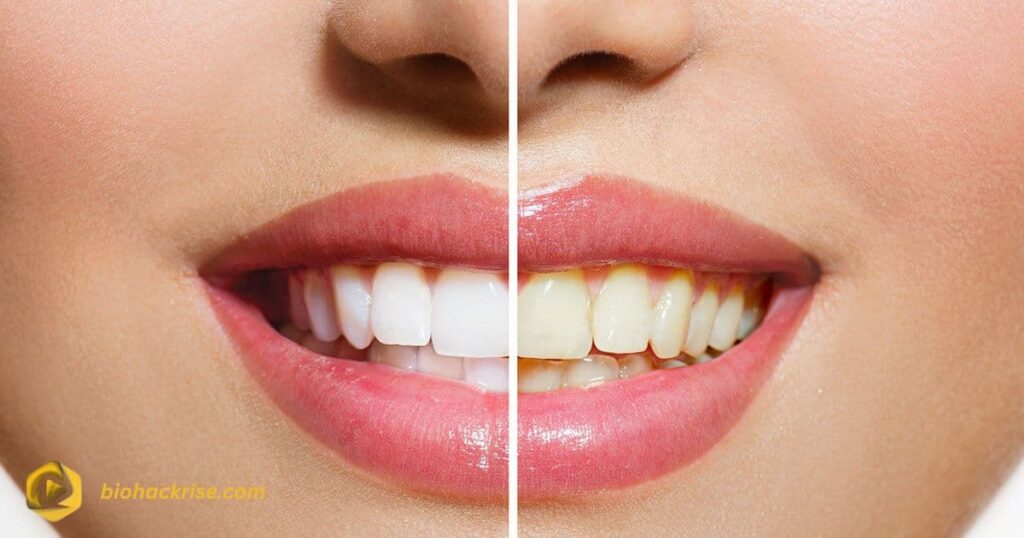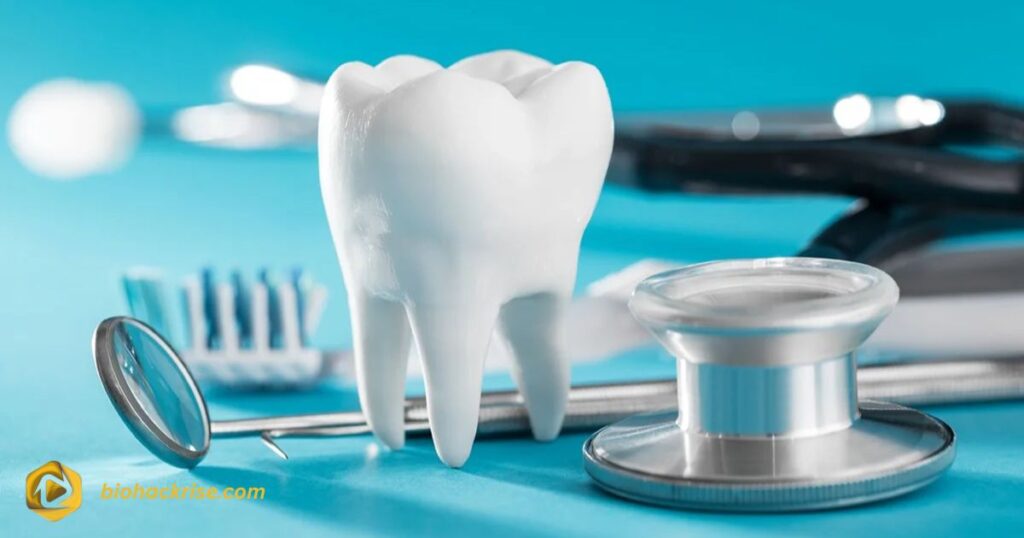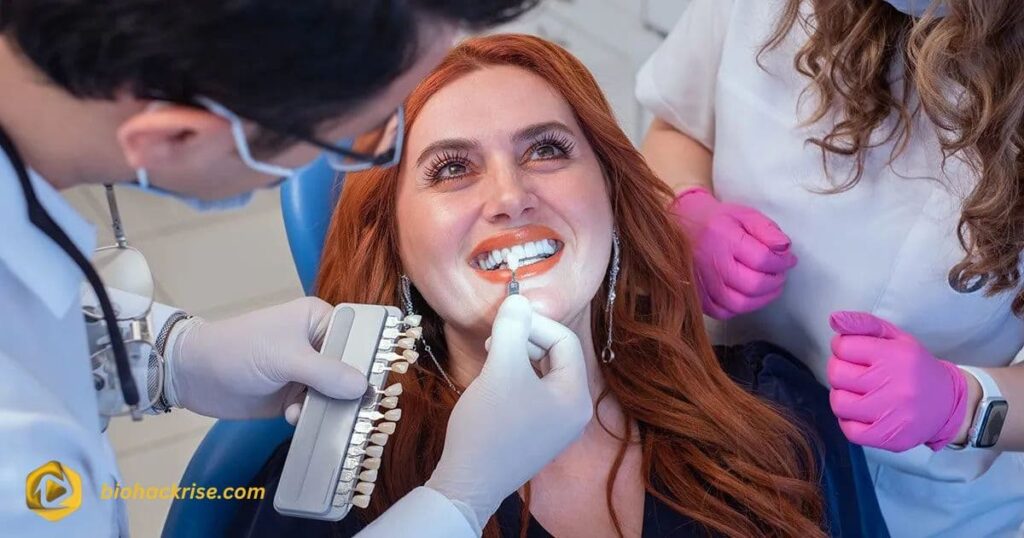Teeth Before Veneers: The Complete Guide to Preparation and Transformation
Getting veneers is one of the most popular cosmetic dentistry procedures for achieving a perfect smile. But have you ever wondered what your teeth look like before veneers? Or what really happens to your natural teeth during the preparation process? If you’re considering veneers but worried about what lies beneath those pearly whites, this guide is for you.
In this detailed, SEO-optimized article, we’ll walk you through every stage from the natural appearance of teeth before veneers to how dentists prepare them, the pros and cons of the procedure and real-world insights into what to expect before and after.
So, let’s dive into the world of smile makeovers and uncover the truth about teeth before veneers.
Understanding Veneers: A Quick Overview
Before we look at what happens to your teeth before veneers, it’s essential to understand what veneers actually are. Veneers are thin, custom-made shells crafted from porcelain or composite resin that bond to the front surface of your teeth. Their purpose? To correct imperfections such as discoloration, chips, gaps, or uneven shapes giving you a symmetrical, radiant smile.
Veneers are often called “instant orthodontics” because they can quickly transform a smile without braces or aligners. They’re custom-designed to match the color, size, and shape that best suit your facial features.
However, veneers aren’t a “one-size-fits-all” solution. Each set is unique and the process begins long before the actual veneer placement starting with an evaluation of your teeth before veneers.
How Dentists Prepare Teeth for Veneers?
The veneer preparation process is where most people get curious and sometimes anxious. You’ve probably seen photos online of “shark teeth” before veneers, which can look alarming. The truth? Preparation depends on the type of veneer and your existing tooth condition.
Here’s the step-by-step process:
- Consultation & Smile Design – The dentist evaluates your teeth and discusses your desired look. Digital imaging or wax mock-ups may show what your smile will look like after veneers.
- Tooth Preparation – A thin layer of enamel (typically 0.3 to 0.7 millimeters) is gently shaved off the tooth surface. This makes room for the veneer and ensures it looks natural, not bulky.
- Impressions & Temporary Veneers – After prepping, impressions are taken and sent to a dental lab. Temporary veneers are placed to protect your teeth while your permanent ones are crafted.
- Final Veneer Bonding – Once ready, the veneers are checked for fit and color, then permanently bonded using dental cement and UV light.
The idea that your teeth are filed into tiny pegs is a misconception. Modern veneer techniques are far more conservative, especially with no-prep veneers or minimal-prep veneers, which require little to no enamel removal.
What Happens If You Don’t Prepare Teeth Before Veneers?
Skipping preparation might sound appealing, but it can lead to bulky, unnatural-looking veneers that don’t align with your bite. Preparation allows veneers to sit flush against your teeth, creating a realistic appearance and comfortable feel.
No-prep veneers work best for patients with small or slightly spaced teeth, but for others, a bit of enamel reshaping ensures the best outcome. Your dentist will recommend the right approach based on your unique smile anatomy.
Are Teeth Permanently Damaged Before Veneers?
This is a common fear that getting veneers means destroying your natural teeth. The truth? No, teeth aren’t destroyed. They’re simply reshaped for precision bonding.
The enamel removal process is superficial much less than what’s required for dental crowns. After veneers are placed, your natural teeth remain healthy and protected underneath.
However, since some enamel is removed, your teeth will always need veneers or a similar covering in the future. So yes, it’s a lifelong commitment, but one that comes with a lifetime of confidence in your smile.
Before and After Veneers: The Real Transformation

The difference between teeth before veneers and after is remarkable. Before, teeth may appear dull, uneven, or misaligned. After, the transformation is seamless whiter, perfectly shaped, and radiant.
Dentists often use digital smile design to show you a preview of your results. It’s almost like a “try-on” for your new teeth. Once applied, veneers blend so naturally that even close friends might not guess they’re not your original teeth.
The Psychology Behind Veneers: More Than Just Aesthetic
Your smile is often the first thing people notice it influences confidence, approachability, and even career success. Many patients say veneers don’t just change their appearance; they transform their self-esteem.
Feeling embarrassed about chipped, stained, or crooked teeth can make you hide your smile. Veneers offer a fresh start a visible symbol of confidence. And confidence? It’s contagious.
Teeth Before Veneers vs. After Veneers: A Comparison Table
| Feature | Before Veneers | After Veneers |
| Color | Yellowed, stained | Bright and natural |
| Shape | Uneven, chipped | Smooth and symmetrical |
| Alignment | Crooked or gapped | Perfectly aligned |
| Texture | Worn or rough | Polished and even |
| Confidence | Often low | Sky-high |
Common Misconceptions About Teeth Before Veneers
- “My teeth will be ruined forever.” – False. Only a minimal layer of enamel is removed.
- “Veneers look fake.” – Modern veneers are ultra-thin and natural-looking.
- “They’re only for celebrities.” – Veneers are more affordable and accessible than ever.
- “They require painful drilling.” – Most patients report little to no discomfort.
Caring for Your Teeth Before and After Veneers
Before veneers, keep your teeth healthy and strong by maintaining proper oral hygiene. Brush twice daily, floss regularly, and avoid excessive coffee, tea, or tobacco these can stain enamel and impact your veneer shade match.
After veneers, your care routine remains the same, but with extra mindfulness:
- Use non-abrasive toothpaste.
- Don’t chew ice or pens.
- Schedule regular cleanings.
Good habits before veneers set the foundation for stunning, long-lasting results afterward.
Cost of Veneers and the Investment in Your Smile
The cost varies depending on material and region. On average:
- Porcelain veneers: $900–$2,500 per tooth
- Composite veneers: $400–$1,500 per tooth
While it may seem pricey, veneers are an investment in confidence, appearance, and long-term dental health. A beautiful smile is priceless and veneers deliver just that.
The Science Behind Veneer Preparation: Why Enamel Reduction Matters?

To fully understand teeth before veneers, it’s essential to grasp the science behind enamel preparation. The enamel is the hardest substance in the human body, but it’s also transparent and relatively thin. When veneers are applied without preparing this surface, the final look may appear bulky or misaligned defeating the purpose of a natural, aesthetic result.
Why enamel reduction is necessary:
- It creates room for the veneer to fit perfectly without altering the natural tooth profile.
- It ensures the bonding material securely adheres to the tooth.
- It prevents the veneer edges from appearing thick or artificial.
Dentists use precision tools, digital imaging, and minimal-invasive technology to perform this process. Today’s methods are so refined that even a few tenths of a millimeter can make a difference in how your smile turns out.
Patients often ask if enamel removal causes pain but don’t worry, the process is generally pain-free. A mild local anesthetic may be used, and the enamel layer being removed has no nerve endings. Afterward, your dentist may place temporary veneers to protect the prepared teeth until your custom ones are ready.
RELATED POST: Dad Fit Building Strength and Style in Modern Fatherhood
Temporary Veneers: What Your Teeth Look Like During the Waiting Period?
After your teeth are prepped, they aren’t left exposed. Temporary veneers act as protective shields and they also give you a “preview” of what your permanent veneers will look like.
These temporary covers are made from acrylic or composite resin. They protect against sensitivity, prevent staining, and allow you to speak and eat normally. However, since they’re not as strong as the final veneers, you’ll need to be cautious.
Tips while wearing temporary veneers:
- Avoid biting hard foods or sticky items like caramel or nuts.
- Brush gently using a soft toothbrush.
- Avoid dark beverages like red wine or coffee to prevent temporary staining.
Your dentist will adjust your temporary veneers for comfort, ensuring your speech and bite feel natural during the waiting phase. This step bridges the gap between teeth before veneers and the dazzling smile that awaits afterward.
Porcelain vs. Composite Veneers: Understanding the Difference
Choosing between porcelain and composite veneers impacts everything from how much your teeth are prepared to how long your new smile will last.
| Feature | Porcelain Veneers | Composite Veneers |
| Material | Ceramic/porcelain | Composite resin |
| Durability | 15–20 years | 7–10 years |
| Appearance | More natural, light-reflective | Slightly less natural |
| Cost | Higher | More affordable |
| Stain Resistance | Excellent | Moderate |
| Preparation Required | Minimal | Often less or none |
| Repair | Must be replaced if damaged | Can be repaired easily |
Porcelain veneers are often the gold standard for a reason they mimic natural tooth translucency beautifully and resist stains like a charm. Composite veneers, on the other hand, are a great entry-level choice for patients seeking affordability and faster results.
Regardless of type, both require evaluation of your teeth before veneers to ensure they’re suitable candidates for the chosen material.
Real Patient Experiences: What to Expect Emotionally and Physically
The emotional journey of getting veneers is as important as the physical one. Many people begin their veneer transformation with mixed feelings — excitement mixed with anxiety about how their natural teeth will look before and after the process.
After the initial enamel preparation, it’s normal to feel mild sensitivity to hot or cold. Some patients describe their teeth before veneers as “slightly rough” or “tender” but this is temporary. Once veneers are bonded, these sensations vanish completely.
Emotionally, the shift can be profound. Patients who once hid their smiles in photos or conversations often report a new sense of self-assurance. The first time you look in the mirror after getting veneers, the transformation can be life-changing it’s more than cosmetic; it’s empowering.
Common Dental Issues Solved by Veneers
Veneers are versatile. They can fix multiple dental concerns that might make you self-conscious about your teeth before veneers.
Here are common issues veneers address:
- Discoloration or Stains: Resistant to whitening treatments? Veneers permanently cover stains from coffee, tobacco, or medication.
- Worn-Down Teeth: Ideal for restoring teeth damaged by grinding or aging.
- Chips and Cracks: Smooth out imperfections for an even smile.
- Gaps Between Teeth: Close spaces without braces or aligners.
- Uneven or Misaligned Teeth: Veneers visually align your smile within just a few appointments.
Essentially, veneers act like “makeup” for your teeth but unlike makeup, the results are durable, custom-designed, and long-lasting.
The Role of Digital Smile Design in Veneer Planning
Modern cosmetic dentistry has evolved with technology and one of the biggest advancements is Digital Smile Design (DSD). Before you even touch a dental drill, you can see what your smile will look like post-veneers.
Using 3D imaging and computer modeling, DSD lets your dentist:
- Design veneers based on your facial proportions.
- Adjust tooth shape and length digitally.
- Preview final results in real time.
This ensures your veneers enhance your facial harmony not just your teeth. Patients can even “test-drive” their new smile using mock-ups before any real dental work begins.
When you see your teeth before veneers compared to your digital preview, the difference is often astonishing.
Potential Risks and Considerations Before Getting Veneers
While veneers are safe and effective, they’re not suitable for everyone. Understanding the possible drawbacks ensures you make an informed choice.
Potential concerns include:
- Irreversible enamel removal.
- Sensitivity after preparation (usually temporary).
- Potential veneer detachment if not properly bonded.
- Color mismatch if not customized correctly.
Additionally, if you suffer from gum disease, tooth decay, or heavy grinding (bruxism), your dentist may recommend addressing those issues before veneer placement.
Choosing a skilled cosmetic dentist dramatically reduces these risks and guarantees your veneers look natural and last for years.
Long-Term Maintenance of Veneers
Your veneers are strong, but like anything beautiful, they require care. Proper maintenance ensures they remain as radiant as day one.
Do’s:
- Brush with fluoride toothpaste twice daily.
- Use a soft-bristled toothbrush to prevent surface scratching.
- Visit your dentist regularly for cleaning and inspection.
Don’ts:
- Avoid biting nails, opening packages with your teeth, or chewing ice.
- Limit stain-causing foods like red wine, berries, or dark sauces.
- Skip abrasive whitening toothpaste that may dull veneer polish.
If you grind your teeth, wearing a nightguard protects both your veneers and natural teeth.
Alternative Options to Veneers
Not ready for veneers yet? There are other smile-enhancing alternatives that preserve your natural teeth before veneers condition:
- Dental Bonding: Quick and affordable, perfect for minor chips or discoloration.
- Teeth Whitening: Enhances natural color for those without structural issues.
- Orthodontics: Invisalign or braces can correct alignment before veneers.
- Dental Crowns: Better for severely damaged or decayed teeth.
A skilled dentist will guide you on whether veneers are your best option or if a less invasive treatment can achieve your desired results.
The Evolution of Veneers: From Past to Present
Understanding how far veneers have come helps you appreciate the artistry involved in transforming teeth before veneers into picture-perfect smiles today.
Decades ago, veneers were mostly used in Hollywood. In the 1930s, dentist Dr. Charles Pincus first created temporary veneers to improve actors’ smiles on camera. These early versions lasted only a few days they were purely cosmetic for film shoots.
Over the years, advancements in dental bonding technology, porcelain fabrication and digital imaging turned veneers into a durable, realistic, and permanent solution.
Modern veneers are incredibly thin (as little as 0.2 mm thick), translucent like real enamel, and designed with CAD/CAM systems for perfect precision.
Today, patients can even choose between traditional porcelain veneers, minimal-prep veneers, and no-prep options like Lumineers, offering more flexibility depending on how much they want to alter their natural teeth.
The result? A smile makeover that’s not just beautiful but scientifically engineered to protect your natural teeth underneath.
Teeth Before Veneers and Oral Health: The Connection

Before you get veneers, your dentist will thoroughly assess your oral health. This is because veneers should be placed only on strong, healthy teeth with stable gums and good enamel quality.
If you have gum disease, cavities, or enamel erosion, those issues must be treated first. Applying veneers over unhealthy teeth can lead to complications from veneer detachment to gum inflammation.
Checklist before veneers:
- Your gums should be pink, firm, and free from bleeding.
- Cavities or decayed teeth must be restored first.
- If you grind your teeth, a custom mouthguard is recommended.
- Your bite alignment should be stable to prevent veneer cracking.
Healthy teeth before veneers create the foundation for long-term success. It’s like building a house strong walls before decoration. Veneers enhance beauty, but oral health preserves it.
How Dentists Customize Veneer Shades to Match Natural Teeth?
One of the biggest misconceptions about veneers is that they all look unnaturally white. In reality, modern veneers are crafted to mimic your unique shade, translucency, and texture.
Dentists use a shade guide to compare your natural enamel color. You can choose a brighter smile, but the goal is to remain realistic. For instance, a “Hollywood white” smile might suit some, but others prefer a softer, natural ivory tone.
Key factors in shade selection:
- Skin tone: Warmer shades complement darker skin tones.
- Eye color: Helps balance brightness.
- Age: A slightly natural tint avoids the “too white” artificial look.
Your dentist and ceramist work hand-in-hand to craft veneers that seamlessly blend with surrounding teeth. The best veneers are the ones no one can tell apart from natural enamel.
The Role of Gum Contouring in Veneer Preparation
In some cases, it’s not just your teeth before veneers that need adjustment your gums might, too. Uneven or excessive gum tissue can make teeth appear short or irregular.
That’s where gum contouring comes in. This minor cosmetic procedure shapes and balances your gum line using laser or scalpel techniques. It’s quick, painless, and helps create symmetry for your new veneers.
Think of it as framing a painting: even the most beautiful artwork needs the right frame to look complete. Gum contouring ensures your veneers are perfectly proportioned within your smile.
Veneers and Tooth Sensitivity: What to Expect?
After enamel reshaping, your teeth before veneers may feel slightly sensitive to temperature. This is completely normal and temporary.
Here’s what typically happens:
- Sensitivity peaks within the first 24–72 hours after preparation.
- Using toothpaste for sensitive teeth helps minimize discomfort.
- Once your permanent veneers are bonded, sensitivity disappears.
The bonding material and porcelain layer act like a protective shell sealing your teeth and shielding nerve endings. In fact, many patients report less sensitivity after veneers than before, especially if their natural enamel was thin.
Veneers and Diet: What to Eat and Avoid?
Your diet plays a role in maintaining your veneers’ longevity and beauty. Before and after veneer placement, your food choices matter.
Foods to enjoy safely:
- Soft fruits (bananas, berries, melons)
- Cooked vegetables
- Dairy products and lean proteins
- Smoothies and soups
Foods to limit or avoid:
- Hard nuts, ice cubes, or candy (risk of chipping)
- Dark sauces, red wine, and coffee (potential staining for composite veneers)
- Sticky foods like caramel or taffy (especially with temporary veneers)
Also, avoid biting directly into hard foods with your front teeth use your molars instead. Veneers are strong, but treating them gently will extend their lifespan significantly.
How to Choose the Right Dentist for Veneers?
Selecting the right dentist is arguably the most important part of your veneer journey. The skill, precision, and artistry of your cosmetic dentist determine how your teeth before veneers transform into your dream smile.
Tips for choosing wisely:
- Look for dentists specializing in cosmetic dentistry or prosthodontics.
- Review before-and-after photos of actual patients.
- Ask about the materials they use (porcelain type, bonding systems, etc.).
- Discuss customization options, including digital smile design.
- Read patient testimonials and reviews online.
The right professional will take time to understand your goals, facial structure, and aesthetic preferences. They’ll also ensure your veneers enhance — not overpower your natural beauty.
Future of Veneers: Innovations on the Horizon
Dental technology keeps evolving, and the future of veneers looks brighter than ever. Researchers are now developing bio-compatible nanoceramic veneers that are thinner, stronger, and even more lifelike than traditional porcelain.
3D printing and AI-assisted smile design are also revolutionizing cosmetic dentistry. Soon, veneers could be custom-printed in-office within hours instead of days, reducing treatment time significantly.
Other innovations include self-healing composite materials that can repair micro-cracks over time and color-adaptive veneers that adjust to lighting conditions for even more natural aesthetics.
These developments will make the transformation from teeth before veneers to a radiant smile faster, safer, and more personalized than ever before.
FAQ’s
Will I experience pain during veneer preparation?
Not at all. Local anesthesia ensures the process is comfortable and pain-free.
Can veneers fix severely crooked teeth?
Minor misalignment can be masked with veneers, but major orthodontic issues may require braces or Invisalign first.
How long does it take to get used to veneers?
Most patients adjust within a week or two, after which they feel completely natural.
Can veneers stain over time?
Porcelain veneers resist stains very well, while composite veneers may discolor slightly after years of use.
What happens if a veneer breaks?
Your dentist can repair or replace it quickly modern bonding materials make the process efficient and seamless.
Is veneer maintenance different from regular dental care?
Not much brushing, flossing, and routine checkups are still essential.
Conclusion
Your smile is your signature it’s the first thing people notice and the last thing they forget. Veneers don’t just change how your teeth look; they transform how you feel about yourself.
From your natural teeth before veneers to your dazzling new smile, the journey is about progress, not perfection. Modern veneers respect your natural anatomy, enhance your individuality, and give you back something priceless confidence.
Whether you’re fixing minor flaws or going for a total smile makeover, remember: your veneers should tell your story, not replace it. And when crafted with care, they’ll do just that beautifully, naturally and lastingly.




